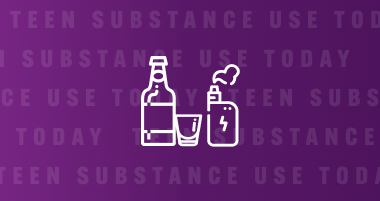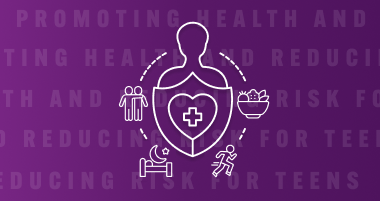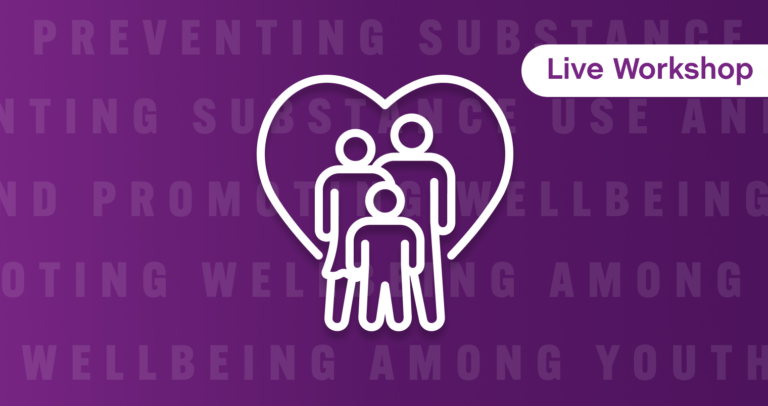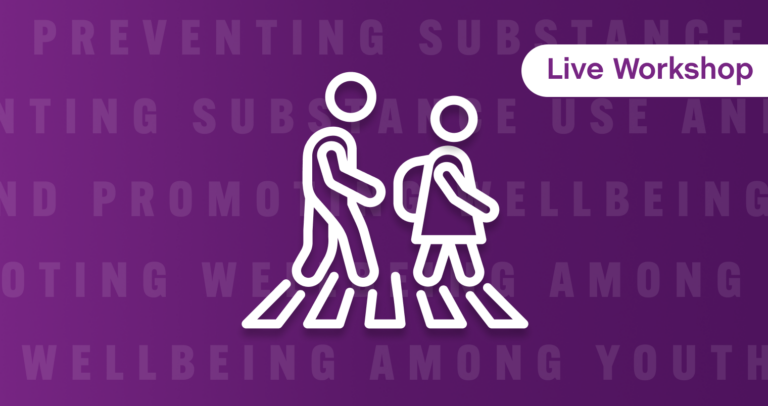
Teen Substance Use Today:
Essential Knowledge for School Personnel
Empower Your Students. Strengthen Your Impact.
This dynamic six-module course equips educators, counselors and other school-based personnel with the essential knowledge and practical tools to prevent youth substance use before it starts. Grounded in cutting-edge prevention science, the training explores the root causes and risk factors that can lead students down the path of addiction—and how you can intervene early.
It will discuss the key principles of prevention science, as well as the factors that increase and those that decrease a young person’s risk for substance use and addiction. Modules will dive into alcohol, nicotine (vaping), marijuana, prescription drugs, and fentanyl.
Designed for immediate application in school and other youth-serving settings, this course will deepen your understanding and sharpen your ability to foster resilience, spark meaningful conversations, and create a safer, healthier environment.
Start today and become a more confident, informed advocate for your students’ well-being.
Learn more about the different ways we offer this course:

Individual License
$79

Group Bundle
Bundled pricing for groups also available.
Course Overview
This six-module, self-paced course equips school personnel with foundational knowledge in prevention science and the factors that increase youth risk for substance use. Through focused lessons on alcohol, vaping, marijuana, and prescription drugs—including fentanyl—educators gain the tools to recognize early warning signs and support healthier student outcomes.
Learning Objectives
By taking this course, participants will:
- Understand the prevalence and basic risks associated with the most common forms of substance use among youth.
- Become familiar with the common risk and protective factors for youth substance use.
- Recognize the signs when a student may be struggling with substance use and know how to help.
Course Outline
This recorded workshop with accompanying slide deck begins with a brief introduction followed by six 30-minute video modules:
1. Key Principles of Prevention Science and Practice
- This module provides an overview of the key principles of prevention science. It describes how common youth risk behaviors are, offers a historical perspective of prevention strategies, and provides best practices for an effective health-based approach to prevention and the promotion of healthy youth development.
2. Understanding the Risks for Youth Substance Use
- This module focuses on the factors that increase the risk that a young person will use and potentially have problems with nicotine, alcohol, marijuana, or other drugs. It explains how adolescent brain development relates to substance use risk and why the adolescent period presents both a time for rich and exciting opportunities for growth and a time for heightened concern regarding health and safety.
3. Substances Deep Dive: Alcohol
- This module is the first of our deep dives into specific substances, and it focuses on one of the most commonly used substances among youth and adults: alcohol. It describes how alcohol affects the brain and body, especially among young people, and the consequences associated with youth drinking. It provides research-based strategies for limiting exposure and access to alcohol, preventing use, and intervening early with those who may need help.
4. Substances Deep Dive: Nicotine Vaping
- This module presents a deep dive into a substance that has regained its popularity among youth and young adults, nicotine, with a primary focus on the use of electronic cigarettes, or nicotine vaping products. It discusses the different types of nicotine products that appeal to youth today (including oral nicotine products), why students may be motivated to try them, why it is concerning for student health and well-being, and how educators, school staff, and other youth-serving professionals can intervene effectively.
5. Substances Deep Dive: Marijuana
- This module presents a deep dive into marijuana or cannabis, with a focus on how and why students use it; its effects on youth health, academic performance, and well-being ;and what educators, school staff, and other youth-serving professionals can do to protect them in an age of growing acceptance of the drug.
6. Substances Deep Dive: Prescription Drugs and Fentanyl
- This module discusses the misuse of prescription drugs like opioids, stimulants, and depressants among students and the unique risks to students of the opioid drug fentanyl. It describes the motivations for prescription drug misuse among young people and how best to protect them from the harms of these drugs, especially fentanyl, which has contaminated the illegal drug supply and led to an alarming rise in overdose deaths.
Your Instructor
The content for this course was created in collaboration with Linda Richter, PhD, Partnership’s Senior Vice President, Prevention Research and Analysis. Dr. Richter’s work focuses on understanding the nature, scope, predictors, and consequences of substance use and addiction, especially among young people.
Course Completion & Continuing Education (CE) Information
Upon request, a certificate of completion can be sent after completion of the course. Contact our team at solutions@toendaddiction.org for more information.
Pricing Details
- For this asynchronous training, registration is automated with no date-related restrictions.
Our Refund Policy, Cancellation Policy, and Accessibility Accommodations
- Full refunds are issued only if a training is canceled by Partnership to End Addiction or at the discretion of Partnership to End Addiction based on written request.
- For partial refund of a Partnership to End Addiction training, registrants must withdraw prior to beginning the course.
- We value inclusion and access for all participants and have worked to design the training for a variety of learners. Content includes non-captioned audio materials.
Course Interactions & System Requirements
This course is completely self-paced. Course questions can be directed to: solutions@toendaddiction.org
System requirements
- Operating Systems: Windows XP or higher, MacOS 9 or higher, Android 4.0 or higher
- Internet browser: Internet Explorer 9.0 or higher, Google Chrome, Firefox 10.0 or higher
- Broadband Internet connection: Cable, High-speed DSL & any other medium that is internet accessible.
- Media viewing requirements: Adobe Reader, Flash Player, & HTML5
Other Courses You Might Like

Promoting Health and Reducing Risk for Teens
Designed for immediate application in school and other youth-serving settings, this training helps create a safer, more supportive environment where all young people can succeed and thrive.
Learn more
Preventing Substance Use and Promoting Wellbeing Among Youth: Professional Development Series
Build practical skills for fostering youth resiliency, substance use prevention, and early intervention.
Learn more
Preventing Substance Use and Promoting Wellbeing Among Youth: Parent/Community Informational Series
Help the parents and other caregivers in your community build practical skills for fostering youth resiliency, substance use prevention, and early intervention.
Learn more


